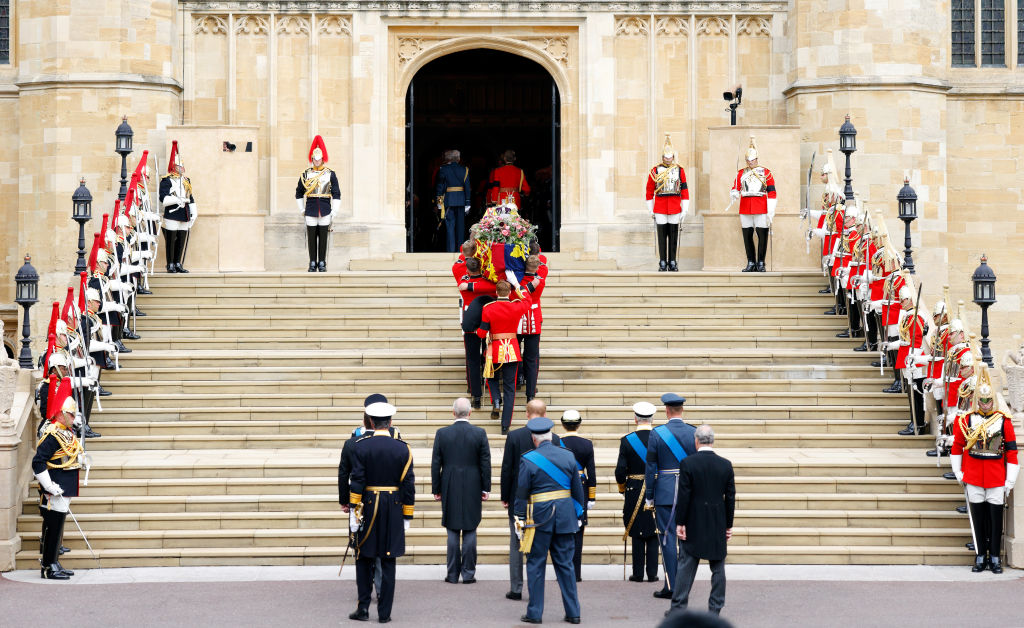Though Queen Elizabeth II was rather small in stature, her coffin weighed several hundred pounds since it was lead-lined in order to preserve the monarch’s body after she was laid to rest.
Though it may sound strange to line a coffin with lead, this is a tradition that goes back hundreds of years, designed to better preserve the bodies of monarchs and important figures since they are entombed above ground, the Washington Post reported.
“[L]ead helps keep out moisture and preserve the body for longer and prevent smells and toxins from a dead body escaping. Her coffin was on display for many days and made a long journey to its final resting place,” Julie Anne Taddeo, a history professor and researcher at the University of Maryland, told the Post.
The lead lining meant the coffin to weigh about 500 pounds, the Daily Mail reported in a tweet.
The eight pallbearers who heroically carried the Queen’s 500lb lead-lined coffin were handpicked from the 1st Battalion Grenadier Guards pic.twitter.com/zRid6zVsuS
— Daily Mail U.K. (@DailyMailUK) September 21, 2022
Due to the weight, Taddeo said that there was a need for eight pallbearers instead of the usual six.
The traditions around British monarchs’ funerals and entombment have roots in history.
For instance, monarchs’ coffins stopped being transported in carriages after Queen Victoria’s coffin in 1901 was nearly dropped in the street after the horses pulling it spooked, the Post reported.
Since then, monarchs and important figures of state have been carried on the shoulders of pallbearers, despite the heaviness of the lead.
The tradition of regularly lining the coffins with lead dates back much further since monarchs’ bodies have typically been entombed above ground, rather than buried.
Mike Parker Pearson, who is a professor at University College London’s Institute of Archaeology, estimated that lining coffins with lead likely began sometime around the era of King Edward I, who died in 1307, the Post reported.
Edward I’s body was found “well preserved in his marble sarcophagus” in Westminster Abbey in 1774.
Before that era, kings were not always well preserved, and there are some particularly grisly accounts of what happened to William the Conquerer’s body in 1087 when he died.
Pearson recounted to the Post that William the Conquerer’s body decayed so badly that it bloated, and eventually, the abdominal area exploded when they tried to put the body in “a stone coffin that proved too small for his bulk.”
“Mourners supposedly ran for the door to escape the putrid stench,” he added.
According to the Orderic, a monk who recounted William’s death, “The swollen bowels burst, and an intolerable stench assailed the nostrils of the by-standers and the whole crowd,” the University of Chicago’s Encyclopedia read.
For the following centuries, monarchs began to be better preserved in lead-lined coffins, and the tradition has continued to modern times.
Queen Elizabeth II’s coffin was actually designed decades ago, the Irish Mirror reported.
The special firm of Henry Smith designed the coffin for the queen about 30 years ago. The same firm also made Prince Philip’s, the queen’s late husband’s, coffin.
Henry Smith also made coffins for Freddie Mercury and Jimi Hendrix before the firm closed in 2005, the Irish Mirror reported.
After making the long journey back to London, the queen was finally laid to rest on Monday at Windsor Castle, the Post reported.
The queen was entombed in the King George VI Memorial Chapel in St. George’s Chapel. She rests with her late husband, her sister and her parents.
This article appeared originally on The Western Journal.
























